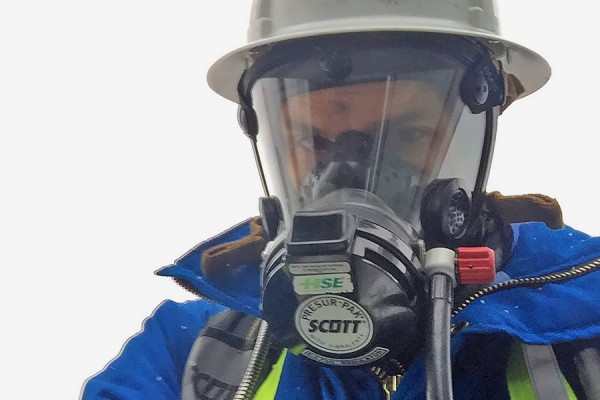 Professor Scott Mundle is part of a research team that has found methane can migrate through shale to contaminate groundwater naturally.
Professor Scott Mundle is part of a research team that has found methane can migrate through shale to contaminate groundwater naturally.
A team of researchers from the University of Windsor and the University of Saskatchewan have discovered that methane can naturally migrate upwards through shale over millions of years and reach groundwater without any industry influence.
“Upward migration of methane through low-porosity zones raises awareness that groundwater wells can be naturally contaminated by deeper sources of methane,” says Scott Mundle, an assistant professor of chemistry in the Great Lakes Institute for Environmental Research. “This is an important consideration when investigating potential causal links between fracking and an impacted water well.”
Dr. Mundle recently co-authored the article “Fate and Transport of Shale-derived, Biogenic Methane,” published in July by Scientific Reports, an open-access subsidiary of the journal Nature.
Mundle uses stable isotope geoforensics to identify the sources of gases, fluids, and contaminants released into the environment from industry. A key component of his work in the oil and gas sector is to develop high-resolution geochemical profiles that “fingerprint” the baseline conditions in an area of operation.
These profiles help identify the sources of gases and fluids leaking from oil wells and pipelines. Geoforensic methods can conclusively determine single and mixed sources when a well or pipeline leaks.
“You need to know what is there naturally for it to work. It is the geochemical equivalent of a police fingerprint database and just as important for environmental investigations,” he says.
The geochemical profiles collected during drilling programs provide a continuous set of fingerprints from the surface to the depth of exploration, identifying every potential source zone for leaks in a region.
While characterizing the baseline geochemistry in western Canada, Mundle and his co-authors discovered that methane migrates naturally through low-porosity shales over long timescales into groundwater.
“We saw different concentrations at the top of the shale that suggested lateral water migration was flushing away the methane in the glacial till at some locations,” says Mundle. “Our evidence suggests that methane moves upward to the water table and we discovered that these diffusional forces changed the geoforensic fingerprint of the methane as it migrated through the shale.”
Mundle says that accounting for these changes in gas signatures will improve the reliability of the geochemical tools used to identify the sources of gas leaking from oil wells and pipelines.
“The geochemistry is never wrong, but interpretations can often be incorrect. This is a piece of evidence that suggests we don’t understand everything yet and we can’t jump to conclusions about the source of gases,” he says.
